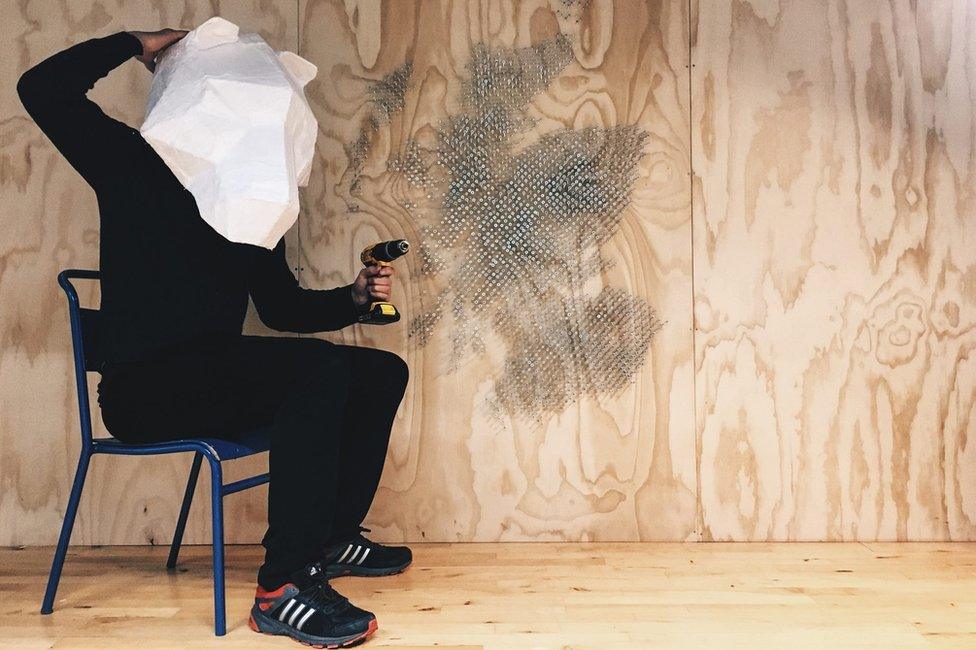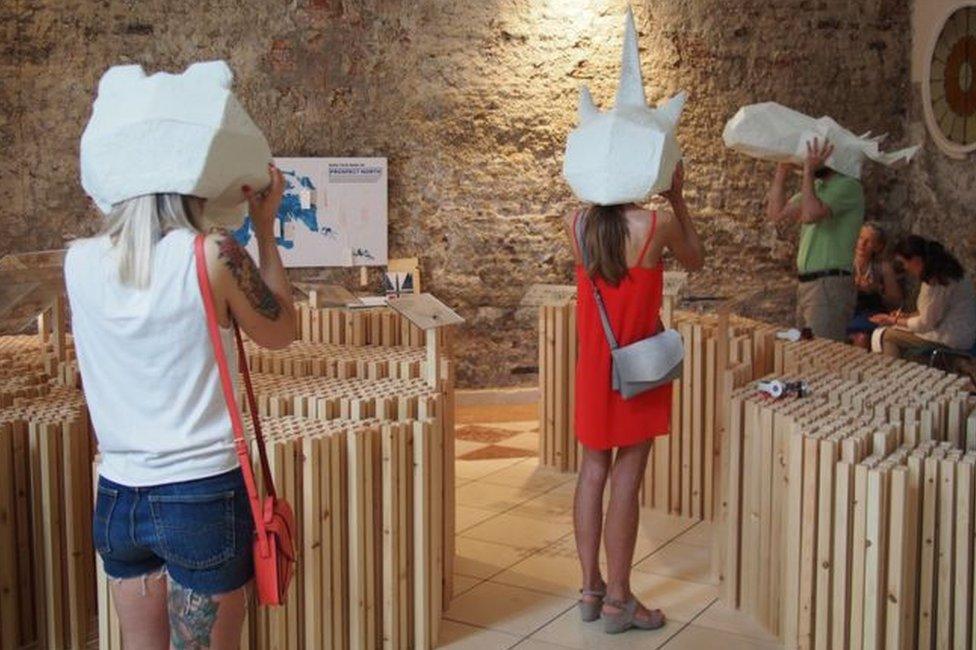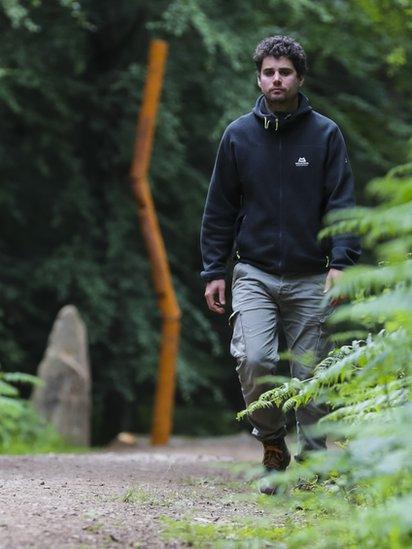Artists chosen for Skye crofters memorial
- Published

Described as a design collective, Lateral North is one of two candidates selected for the project on Skye
Artists have been selected to take forward plans for a memorial to recall a crofters' uprising in the north east of Skye more than 130 years ago.
People living in Staffin were in dispute with landowners because of rent rises, insecurity of tenure and the eviction of families from land.
The unrest was part of a wider period of land rights struggles known as the Crofters' War.
Staffin Community Trust is working with Atlas Arts on the project.
The organisations have selected sculptor Henry Castle and design collective, Lateral North, to work on the project to create a contemporary work of art.
They were selected from more than 40 applications from all over the world.
Lateral North's previous work includes a Scottish exhibition at the Venice International Architectural Biennale last year.
It involved a virtual reality experience of Boreraig on Skye using mobile phones fitted inside mock animal heads.
Bath-born Castle is involved in a long-term project at Rubislaw Quarry in Aberdeen and, since early 2015, he has been working on a body of work to develop a site-specific sculpture at The Forest of Dean.
Castle was elected to the Royal British Society of Sculptors earlier this year.

A contemporary memorial has been proposed for Staffin on Skye
Tom Smith of Lateral North and Castle visited Skye last week.
Smith said: "We are delighted to be involved in a commission which represents such a significant period in the history of the Highlands and Islands.
"From initial conversations with Staffin residents, we have realised the strong relationship and extensive understanding the community has of its crofting history.
"By delving deeper into the stories of Staffin we hope to uncover significant moments which have taken place during the crofters' uprising and produce a body of research that is reflective of its people and place."
'Unique community'
Castle said: "My recent visit to Staffin has revealed to me a particular sense of this very strong community, which embodies a living history of its past.
"Through thorough research and personal experience of spending time in Staffin, I look forward to developing a body of work which celebrates and explores aspects of the place in a way which is as fresh to this unique community as it is to those who know little or nothing about its history."
Dugald Ross, of Staffin Community Trust, said the community was awaiting with interest the outcome of the artists' research.
Emma Nicolson, director of Atlas Arts, said the artists would respond "sensitively and imaginatively" to the task of creating a memorial.

Virtual reality experiences of Scottish scenes being viewed inside animal heads at the Venice International Architectural Biennale
Waged throughout much of the 1800s, the wider Crofters' War was a dispute between landowners and communities distressed by high rents, their lack of rights to land, or facing eviction to make way for large-scale farming operations.
The process of moving families out of inland areas where they had raised cattle for generations to coastal fringes of large estates, or abroad to territories in Canada, had started with the Highland Clearances in the 18th and early 19th centuries.
Military intervention
Both the clearances and the "war" were marked by violent clashes between people facing eviction and landowners and the authorities.
One of the bloodiest incidents of the later unrest was the Battle of the Braes on Skye in 1882.
After being attacked with stones by a crowd of men and women, about 50 police officers from Glasgow baton-charged the mob.
The unrest spread to Glendale and in 1883 the frustrated authorities called for military intervention to help round up the ringleaders.
In early 1883, the iron-hulled Royal Navy gunboat Jackal appeared in Loch Pooltiel, off Glendale.
Marines disembarked from the Jackal and landed at Glendale's Meanish Pier to help police in making arrests.

Henry Castle's other work includes in Aberdeen and The Forest of Dean
But the agitation continued and Prime Minister William Gladstone ordered a public inquiry, something that had been called for previously but rejected by the government.
Backed by Royal approval, the Napier Commission was set up. It was led by Francis Napier, a respected diplomat and the 10th Lord Napier.
In May 1883, it began gathering evidence at hearings across the Highlands and Islands.
Crofters told the hearings of being denied land on which they could grow crops and graze livestock.
Landowners and estate factors defended their actions and insisted change was needed to improve the agricultural output of estates.
The commission also heard evidence of sickness and diseases that afflicted crofting families, and of women and children going barefoot in rain and snow.
Political influence
In 1884, the commission published its report and it was criticised by all involved. Rather than open the way for new legislation, it indicated that the government preferred that landowners and crofters work out their differences without the weight of law.
The following year crofters put up six candidates in a general election, the first to be held after voting reform.
One of the candidates stood against the Duke of Sutherland and, while the crofters' man lost, it was a move that played a part in eroding the Sutherland estate's political influence.
The Crofters' Party did manage to get five of its candidates elected.
In 1886 the Crofters Holdings (Scotland) Act was passed. However, this legislation did not solve all the problems over land rights and disputes continued into the years between the two world wars in the 20th Century.
- Published7 February 2017
